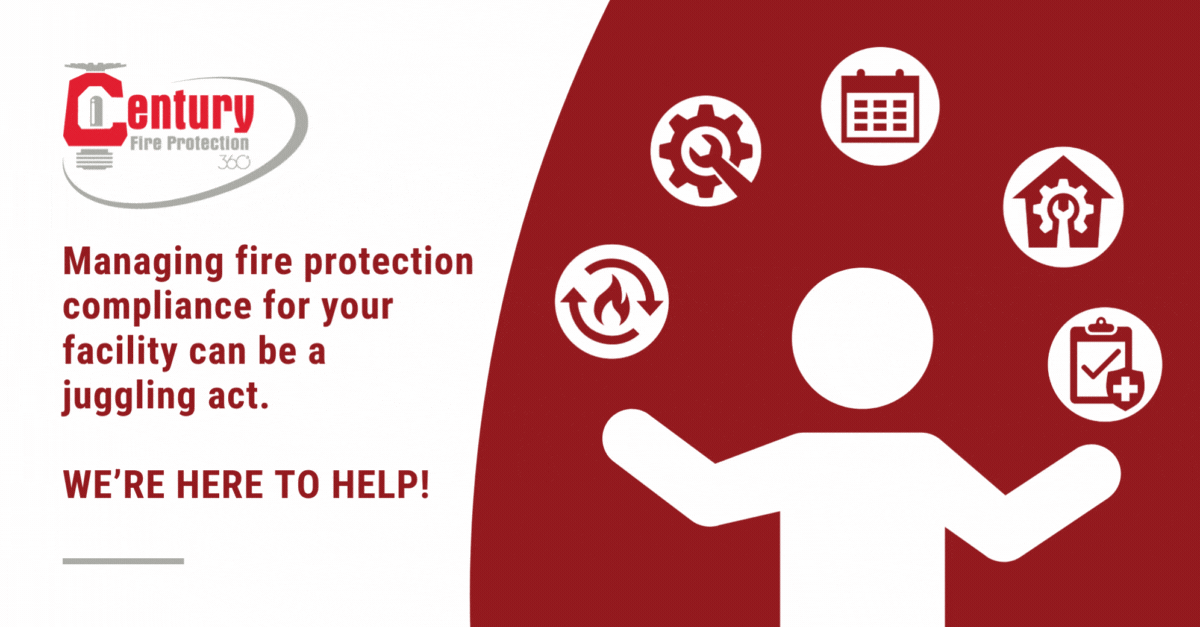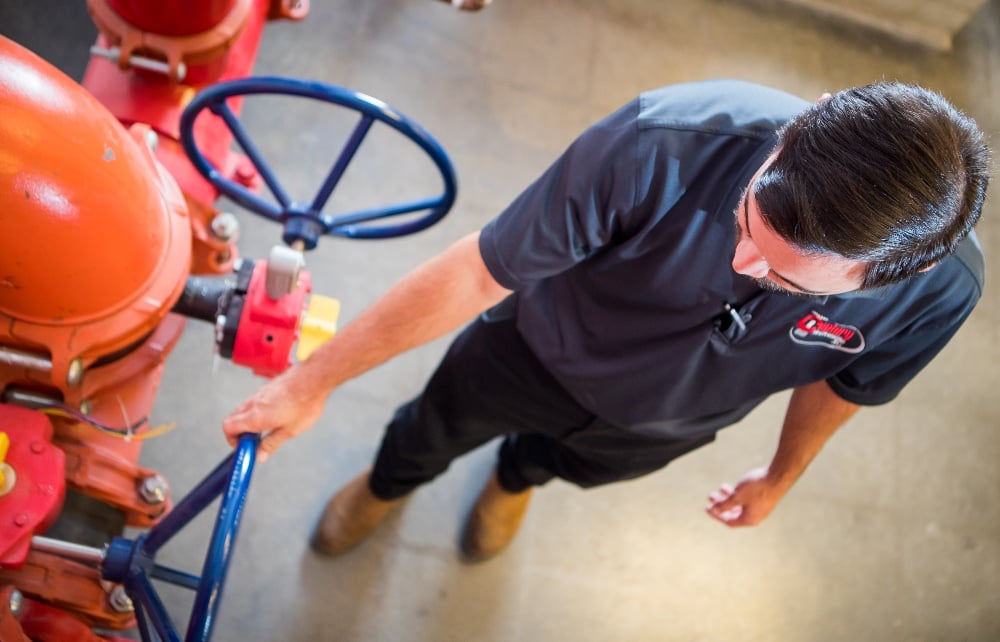Managing Multiple Fire Systems Doesn’t Have to Be a Juggling Act
Managing fire protection compliance for a facility of any size can feel like a juggling act. Between inspections, repairs, and ever-changing codes, it’s a lot to keep in the air—especially when each fire system has its own schedule and vendor.
What You’re Likely Managing
Whether you oversee a hotel, data center, apartment complex, manufacturing plant or other commercial building, keeping your fire protection systems compliant means balancing:
- Different inspection frequencies for alarm, sprinkler, suppression, and extinguishers
- Separate service calls for repairs and maintenance of different fire and life safety systems
- Meeting insurance requirements
- Facility changes that affect system coverage
- Frequent updates to NFPA standards and local codes
- Keeping up with documentation from different sources and systems
When multiple vendors are involved, that coordination gets complicated fast.
When Fire Systems Overlap, So Do the Challenges
Fire protection systems don’t operate in isolation. They’re designed to communicate with each other. So when one system has an issue, it can easily affect another.
For example:
- A sprinkler system must report supervisory or alarm conditions to a fire alarm system.
- A fire alarm system might monitor corrosion in sprinkler pipe or perform routine drains of the low points and even perform flow tests.
- Even stand-alone fire extinguishers can be digitally monitored by a fire alarm system for location and pressure.
As technology evolves, those connections deepen. And when several contractors are responsible for different systems, troubleshooting issues can turn into finger-pointing. Meanwhile, your system stays offline longer than it should, and your compliance window gets tighter.
Why a Single Fire Protection Partner Simplifies Everything
Choosing one trusted contractor for all your fire protection systems helps you stay organized, compliant, and confident your systems work together as intended.
Working with a single-source provider means:
- One point of contact for all your fire protection systems—alarm, sprinkler, suppression, extinguishers, backflows, and more
- Coordinated inspection and maintenance schedules
- Unified reporting for AHJs and insurance
- Fewer gaps, less downtime, and faster resolutions
- Technicians who understand your facility holistically
It’s not just about convenience—it’s about reliability. One team that sees the full picture can help you prevent issues before they start, not just respond after something goes wrong.
A good partner in fire protection is one who can provide expert advice on all of your systems and create a plan to keep you compliant. Look for a company that can inspect, troubleshoot, repair, upgrade, and retrofit every aspect of your fire and life safety systems. Most importantly, your partner should take the time to understand your facilities and operations to develop custom compliance solutions that fit your environment—not just a one-size-fits-all plan.
Simplify the Juggle
Managing multiple fire protection contractors isn’t just time-consuming—it can also increase risk. Partnering with a team that can inspect, maintain, and service all of your systems under one roof can bring peace of mind, streamline compliance, and free you to focus on running your facility.
Ready to take the next step? Reach out to learn more about our single-source fire protection services.
Helpful Resource
Download: Fire Alarm Inspection Testing Intervals (NFPA 72-2019) Cheat Sheet
Stay on schedule and ensure every system inspection meets current code requirements.
The information provided is for general informational purposes only. Every fire protection system is unique, with specific inspection, testing, and maintenance requirements determined by system type, manufacturer specifications, building use, and local regulations. Consult a qualified fire protection professional or your local Authority Having Jurisdiction (AHJ) to ensure compliance with applicable standards. Century Fire Protection assumes no liability for actions taken based on this content.

